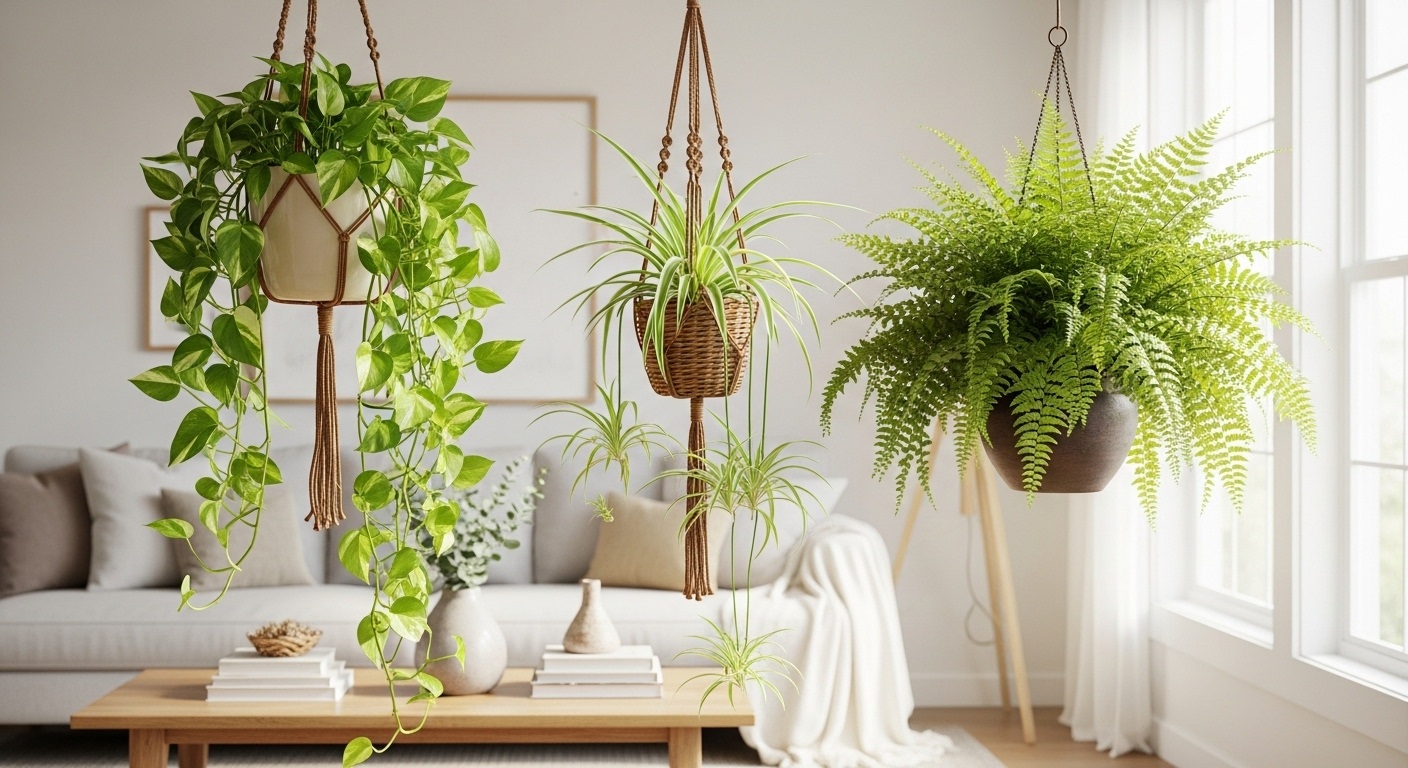Hanging plants are the simplest way to add life and height to a room without giving up valuable floor space. Raised greenery softens hard corners, frames windows, and brings motion to still rooms as leaves shift in the light. The key is to match each plant to the light you actually have, pick planters with proper drainage (or slip a nursery pot into a decorative one), and water so roots never sit in soggy soil. When you hang a plant, think about sightlines—keep foliage above head height in walkways—and choose modest, well-made hardware so the look feels intentional, not improvised. Below are eleven dependable, great-looking choices, with clear styling and care notes so your displays stay healthy and your rooms feel fresh and pulled together.
Golden Pothos (Epipremnum aureum)
Golden pothos is the classic “forgives a miss” hanging plant. Heart-shaped leaves marbled in green and warm yellow tumble on easy vines that look lush in almost any room. Bright, indirect light keeps variegation strong, but average living-room light a few feet from a window still works. Water when the top inch of soil is dry and feed lightly in spring and summer. If the center thins, coil a few cuttings back onto the surface so they root and thicken the crown. Style it in a simple white or terracotta pot to let the leaf pattern lead, and place it where the cascade can frame art, a window, or a bookcase edge without blocking views.
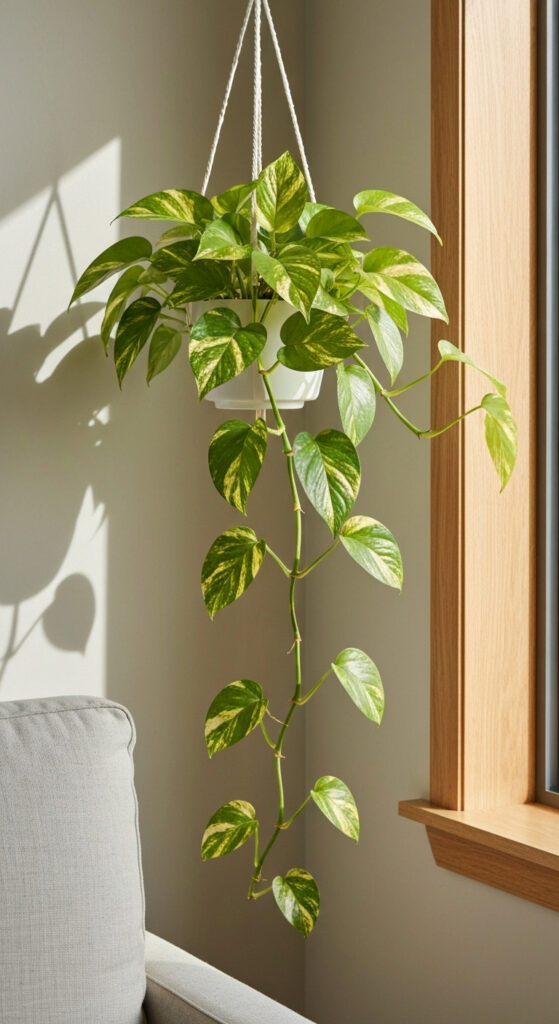
Heartleaf Philodendron (Philodendron hederaceum)
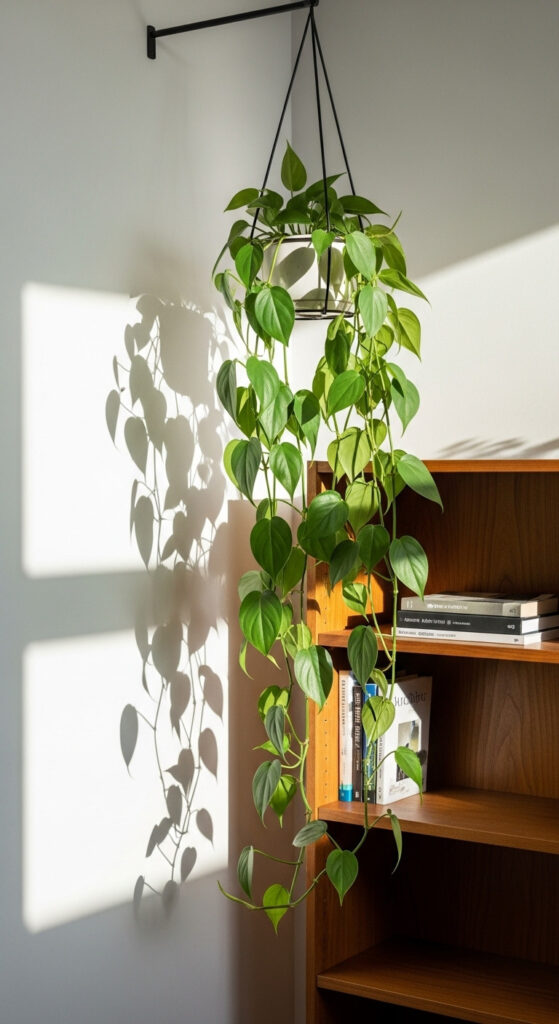
If you want a softer, moodier look, heartleaf philodendron delivers a velvety drape of deep green hearts. It thrives in bright, indirect light but keeps its color in medium light, which makes it perfect near bookshelves or a north window. Water when the top inch dries; keep the mix airy so roots breathe. Pinch tips to encourage branching and rotate the pot weekly so vines don’t lean toward the window. For a polished finish, loop one or two stems around a simple brass hoop tucked at the rim—your cascade will gain height and a gentle, tailored curve without losing that relaxed feel.
Spider Plant (Chlorophytum comosum)
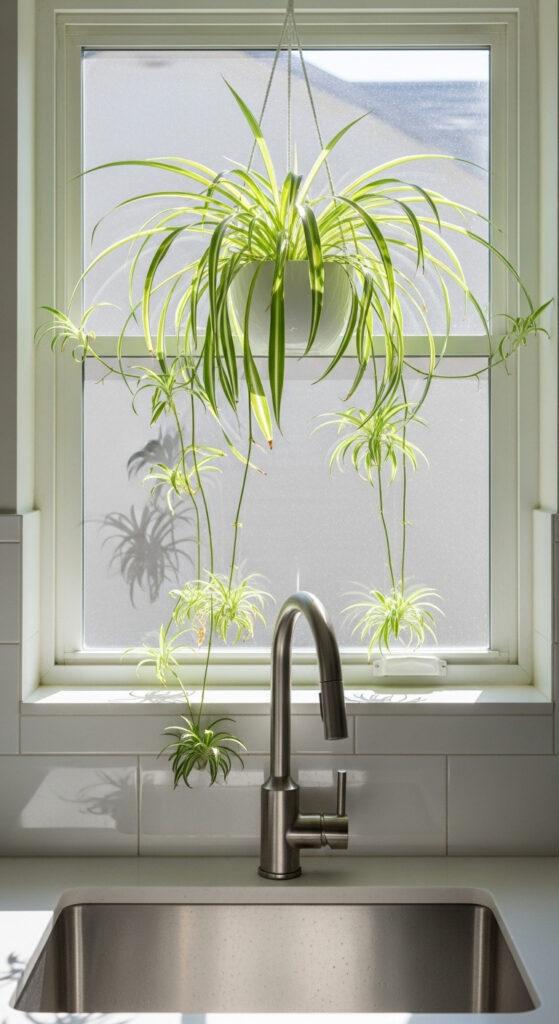
Few plants add as much lively movement as a spider plant in a hanging bowl. Long, arching blades spill outward while baby “spiderettes” dangle like a mobile—great over a kitchen sink, stair landing, or sunny hallway. Give bright, indirect light and let about half the pot dry between waterings. Brown tips usually signal hard water or extra fertilizer; switch to filtered water and trim with clean scissors for a neat edge. Snip a few plantlets and root them in water to refresh the pot or share with friends. A low, wide planter keeps the silhouette graceful and prevents a top-heavy look.
String of Hearts (Ceropegia woodii)
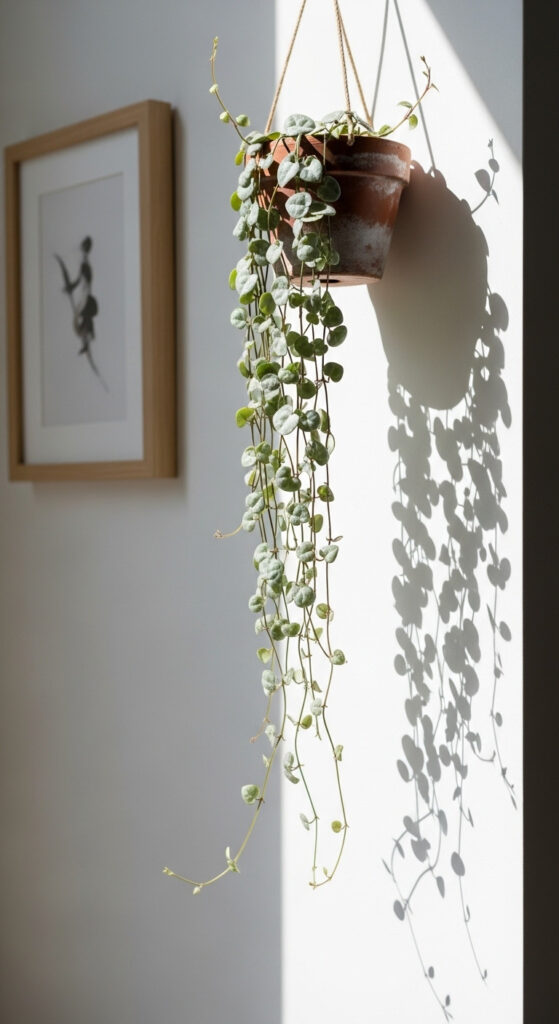
String of hearts brings delicate, silver-flecked hearts on fine, wiry stems—more like jewelry than foliage. It loves bright, indirect light (morning sun is welcome) and a fast-draining mix; standard potting soil cut with perlite works well. Water thoroughly, then wait until the pot is dry before you water again. To thicken the top, coil a few vines across the soil so nodes touch; they’ll root and fill out the crown. Because the vines are thin and airy, this plant layers beautifully with bigger-leaf neighbors without stealing light or making the grouping feel heavy.
Hoya Carnosa (Wax Plant)
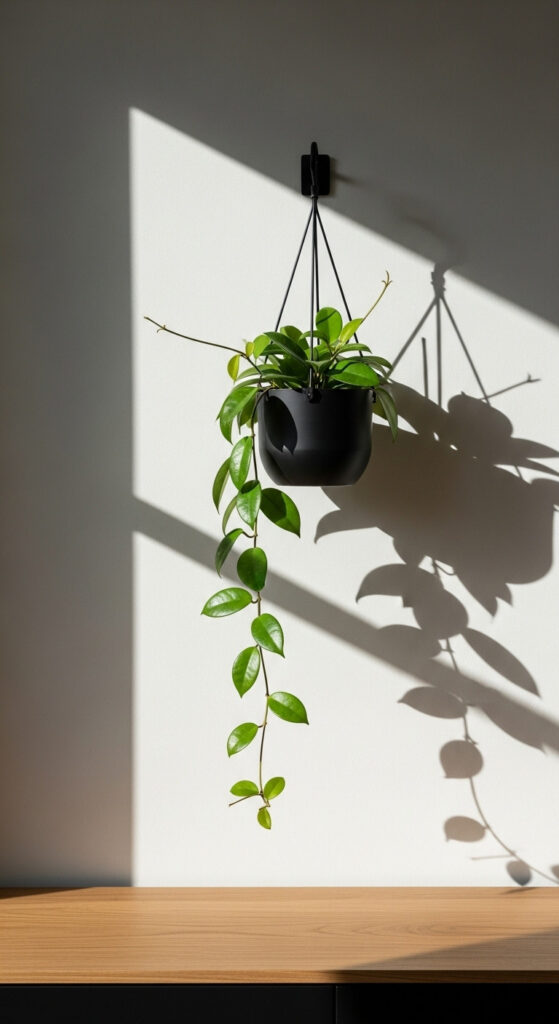
Hoya offers a glossy, sculptural contrast to ferns and trailers. Thick, semi-succulent leaves ride long tendrils that eventually carry star-shaped clusters of blooms on mature plants. Provide bright, indirect light and a chunky, breathable potting mix (soil with bark chips and perlite). Water deeply, then allow the mix to dry most of the way before the next soak. Don’t cut bare “searching” tendrils—new leaves and blooms form there. Hang it where those looping lines can read like living artwork, ideally near a window that backlights the sheen.
Satin Pothos (Scindapsus pictus)
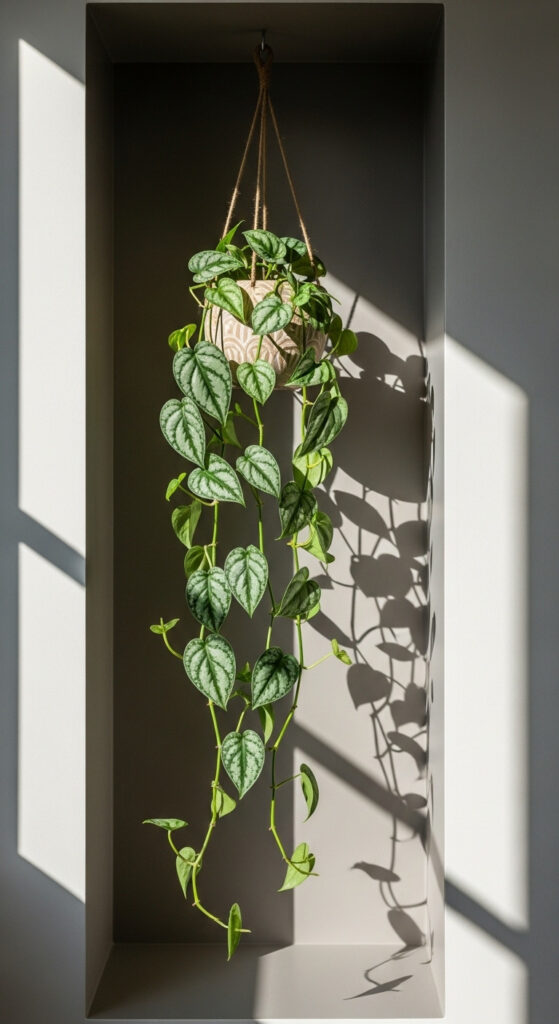
For a richer take on pothos, satin pothos (technically a scindapsus) brings velvety, blue-green leaves dusted with silver that catch light even on cloudy days. Keep it in bright, indirect light to preserve the pattern. Water when the top inch dries and avoid soggy conditions. If you want a fuller basket, take tip cuttings and replant a few back into the pot. Pair with a glossy philodendron or fine-textured rhipsalis so the mix reads deliberate—matte next to shiny, big next to fine—rather than busy.
String of Pearls (Senecio rowleyanus)
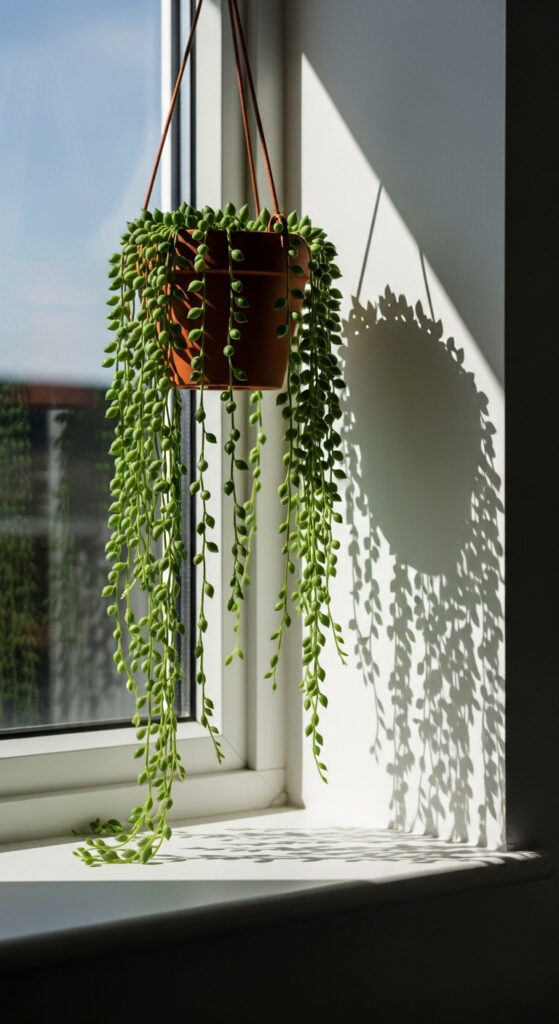
This sculptural succulent looks like a beaded curtain. It asks for lots of bright, indirect light (gentle morning sun is fine) and a gritty, fast-draining mix so water runs through quickly. Soak the pot, then wait until the soil is bone dry before watering again. Avoid misting—pearls rot if they stay wet. Hang it where people won’t brush by, since the strands are delicate. The payoff is a graphic cascade that makes even a simple shelf look styled.
Burro’s Tail (Sedum morganianum)
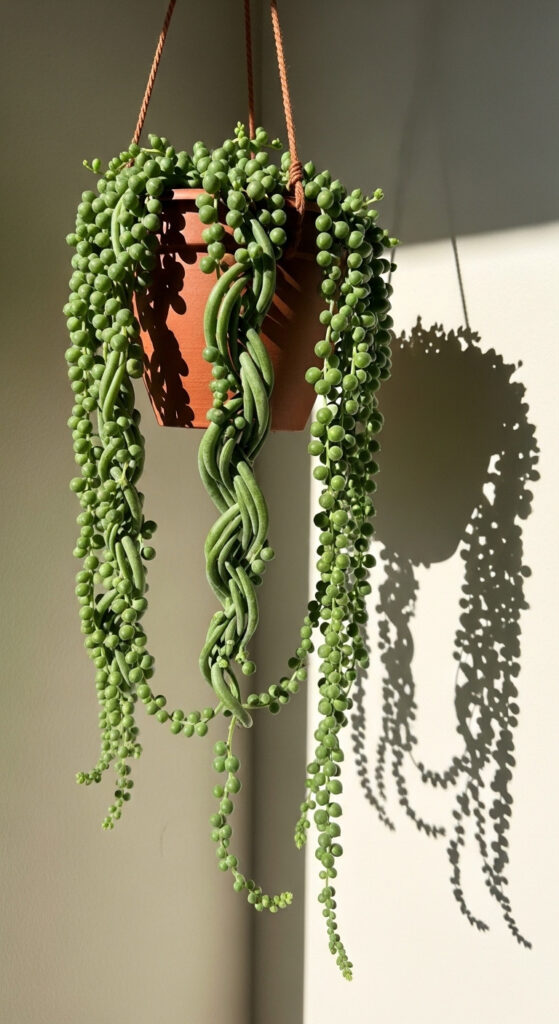
Burro’s tail forms thick, rope-like stems packed with powdery blue-green leaves—stunning when left alone in a bright window. It’s slow to establish and fragile to touch, so pick a spot and resist moving it. Use cactus mix with extra perlite, water sparingly, and rotate the pot monthly so growth stays even. A clay bowl or gently flared pot suits the drape and keeps the heavy stems stable. When you do shed a few leaves (it happens), allow them to callus and lay them on gritty mix; some will root into new starts.
Lipstick Plant (Aeschynanthus radicans)
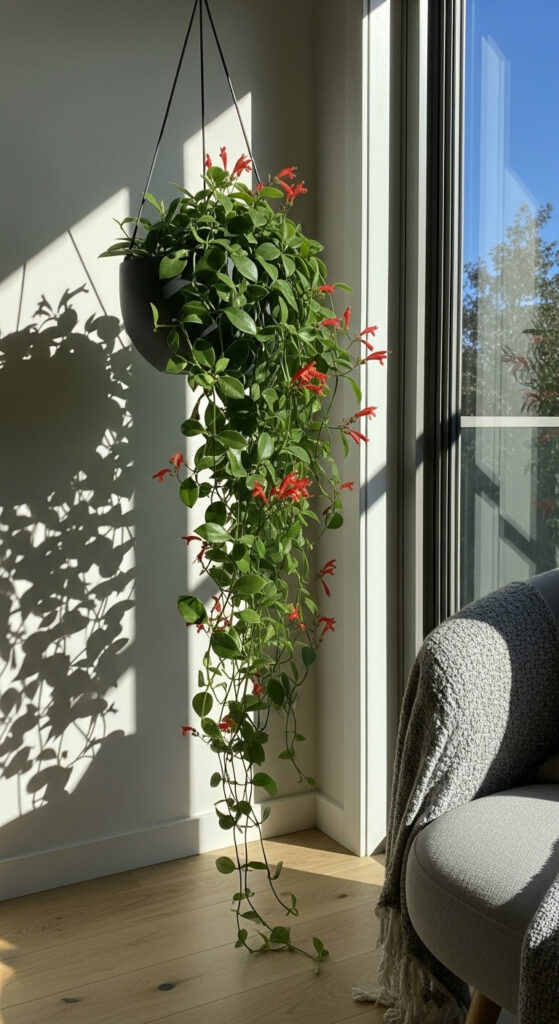
For color without a florist’s arrangement, go with lipstick plant. It carries glossy leaves on arching stems and sends out red tubular blooms that pop against neutral walls. Place in bright, indirect light and keep the soil lightly moist—think evenly damp, not soaked. Shear lightly after a big bloom flush to keep the crown tight and encourage fresh trailing growth. Hung near a patio door or in a living room, it adds a clean burst of color while staying tailored.
Boston Fern (Nephrolepis exaltata)
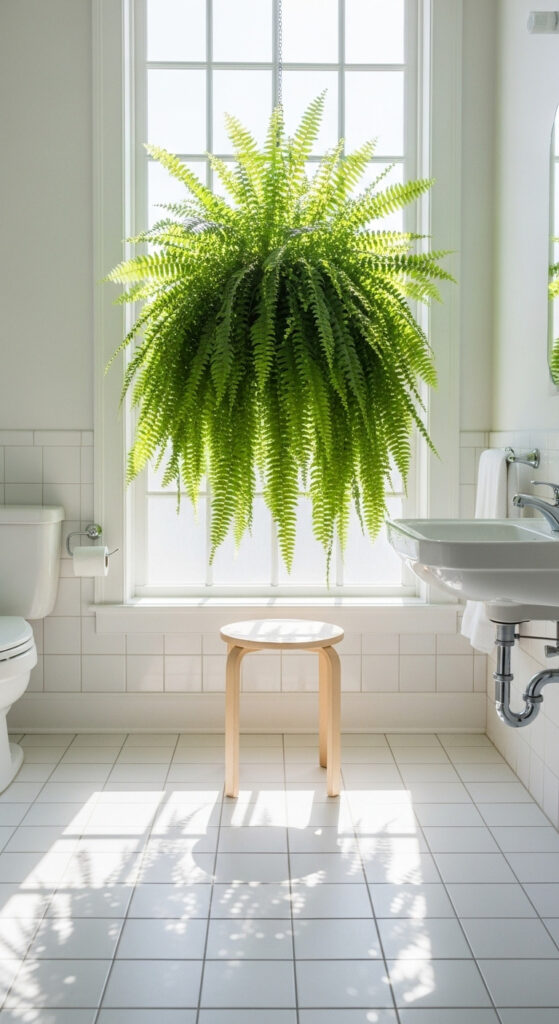
Boston fern brings soft, arching fronds that round off hard corners and make the air feel fresh. It likes bright, indirect light and higher humidity, which is why it excels in a bathroom with a window. Keep the soil evenly moist, trim older fronds at the base, and rotate the hanger so the skirt stays symmetrical. A simple white planter highlights the frond texture and keeps the look clean rather than cottagey.
Rhipsalis (Mistletoe Cactus)
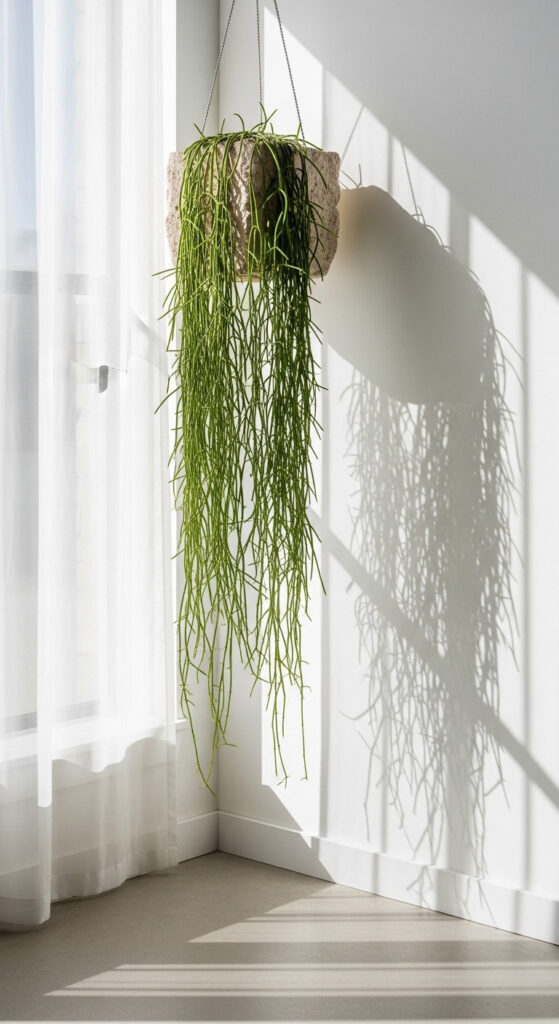
Rhipsalis is the modernist’s hanging plant. Instead of broad leaves, it forms thin, pendant stems that read like a soft green cloud—perfect for keeping groupings light. It’s an epiphyte, so use a loose, bark-rich mix, water when the top third of the pot is dry, and give bright, indirect light. Because the texture is so fine, it pairs beautifully with bolder plants, preventing a window display from feeling bulky. It’s also tidy to prune—no sticky sap, no mess—so you can keep edges sharp.
Philodendron ‘Brasil’
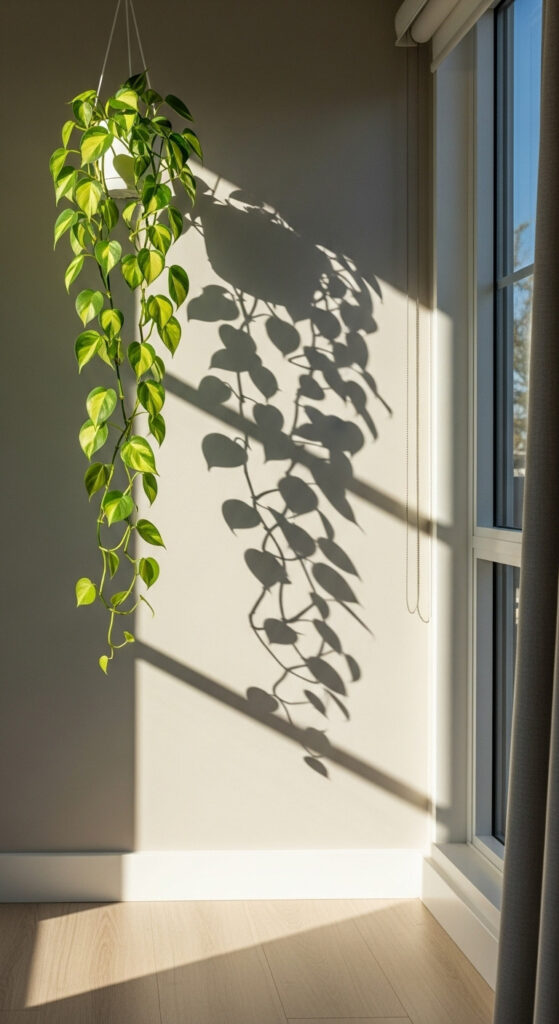
If your room could use pattern but you don’t want loud colors, ‘Brasil’ is a smart middle ground. Its heart-shaped leaves carry a lime-yellow stripe down the center with deep green margins. Keep it in bright, indirect light for the strongest variegation, and water when the top inch of soil dries. Pinch tips occasionally to keep the silhouette dense. In a hanging planter, the two-tone leaves make a crisp frame for windows and art without shouting over the room.
Quick Hanging Setup Checklist
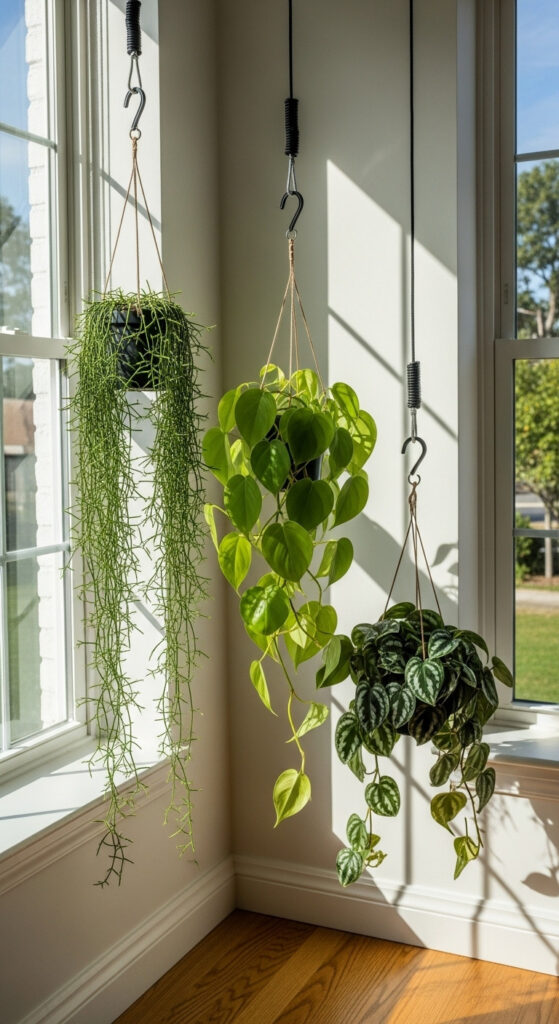
Choose anchors rated beyond the combined weight of pot, mix, and a full watering. Keep foliage 18–24 inches above head height in paths. Most trailing plants prefer bright, indirect light; a sheer curtain helps soften midday sun. Water at the sink: soak thoroughly, let it drain, then return to the hanger. Rotate a quarter turn each week for even growth, and dust leaves with a barely damp cloth so they can breathe. When grouping, mix leaf sizes—one bold, one glossy, one fine—and repeat pot finishes across the room so the display looks collected, not random.
Meet Tomas Clayton, a seasoned plant gardener who has been passionate about horticulture since he was a child. Tomas John developed a love for the natural world and a strong appreciation for the beauty of plants while growing up on a farm.

